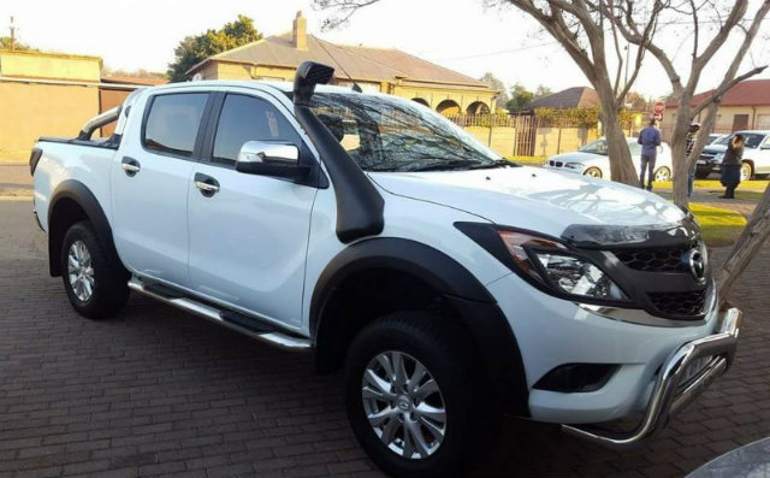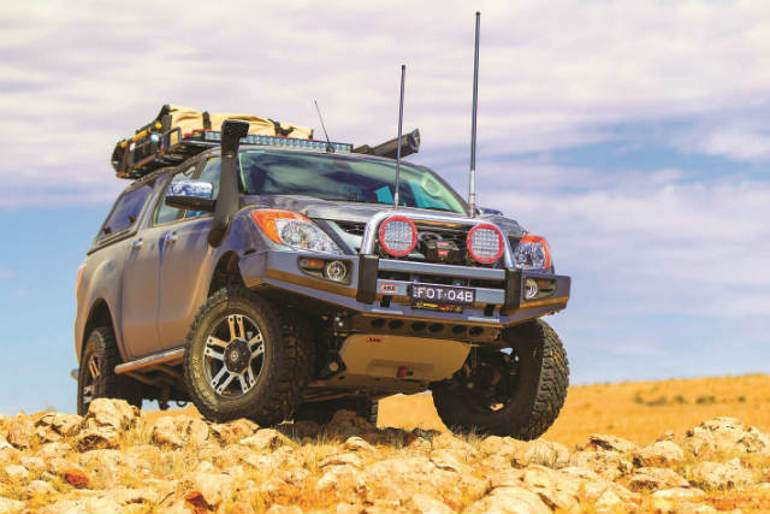Rebadged cars are nothing new, but Mazda has made the whole deal something of an art form. The formula is simple. Take a decent car, and make it better. In all aspects. In the ute world, the BT-50 might not be a best-seller, but it’s still up there with the big boys. The older BT-50 was based on the solid underpinnings of the previous-gen Ford Ranger, and the new Mazda ute uses the Isuzu D-Max as its host vehicle to add a little zoom-zoom magic. The benefit is solid and proven engines, capable chassis and drivetrains, but with the typical Mazda driving experience. And all accessories and additions are compatible with the host cars.
For the Mazda BT-50, and the other utes, for that matter, drivers have a capable vehicle both on and off-road. It doubles as a worthy work car that you can also take for a spin on the dirt. There’s ample space in the tub, even in best-selling double cab variants, but you can also throw in a presentable roof rack if you want more. And to keep everything unharmed, and the bodywork like new, a Mazda BT-50 bull bar does the job.

Benefits of Bull Bars
Bull bars should be one of the first accessories you need for any ute. They keep the radiator and engine protected in all driving conditions, and serve as the base for a range of accessories. You can add lights and antennas, and there are designs with built-in winch cradles, recovery points and points for hi-lift jacks. So, besides offering ample front-end protection in head-on collisions with other vehicles in urban settings, they’ll also be good off-road. Here they prevent damage from unexpected encounters with Aussie wildlife or when tackling extremely difficult terrain littered with rocks, boulders and stumps. They also let you mount side brush bars to keep the doors and front side panels clear of any obstacles.
When put side by side with standard bumpers or nudge bars, there’s just no comparison. Bull bars cover a larger area, are made of thicker metals, and will survive unscathed in almost any accident. The only downside might be the added weight, but if you want a vehicle that’s dressed for any terrain, there’s little option other than a bull bar.
What to Look for in Bull Bars
Buyers need to think about design, materials, features, pricing and how the bull bar fits the vehicle. Though newer integrated and flush designs are all the rage, full-frontal protection is better with traditional bull bars. Here a Mazda BT-50 bull bar will be either a full triple hoop or a smaller single hoop. Triple hoops cover more of the front, with the central part extending above the grille and side hoops covering the headlights. Single hoops typically project over a large portion of the grille, though smaller versions aren’t as high. It all depends on what you need and the look you want for your ute.
Materials need to take the impact in collisions. This after all is the main purpose of the bar. Heavier bull bars come in heavy-duty steel construction for high strength, which also absorbs the high mechanical forces during collisions. Tubing is thick (more so in the right places), and welds are precise and seamless. Coatings increase resistance to wear and corrosion and blend well with the rest of the car.

Aluminium is offered as-is, without coatings, and needs to be specified thicker to reach the strength of comparable steel bull bars. You can shed some weight with lighter aluminium bars, though you’ll be reducing effectiveness. Some drivers prefer the look of aluminium, and if this is you, just keep some polish nearby.
Bull bars have integrated features that increase their versatility. The best feature is the integrated winch cradle, which makes fitting a winch simple. If you often traverse country areas where you think a winch will come in handy, then spare yourself the hassle and get a winch-compatible bull bar. On the recovery side of things, most bull bars have a pair of rated recovery tow points, and points to safely fit a high-lift jack when lifting your ute out of a rut. Towing and lifting capacity of recovery and jack points should be checked in aftermarket variants. Other things to look for are an integrated indicator and fog lights, brackets for mounting accessories and the option of fitting a front bash plate. Most bull bars have these included. All variants sold on the Aussie market must comply with strict Australian Design Rules (ADR) to ensure that airbags, sensors and other related safety systems aren’t affected.
Mounting requires skilled personnel to remove the stock bumper. Installing a Mazda BT-50 bull bar can last a couple of hours, so set a day aside to get the job done. Drilling into the chassis isn’t required. Instead, all bull bars are supplied with complete mounting kits. Have in mind that with more tech, newer BT-50s may need some work with complex wiring during installation to comply with ADR standards.
Lastly, it’s all about price. Buying direct from the dealership can be a costly venture. You can save some cash if you opt for an aftermarket bull bar that is just as strong, well-built and good-looking.

